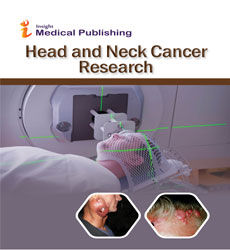Abstract
Nasopharyngeal Angiofibroma Juvenile With Subsequent Cerebrovascular Disorder To Therapeutic Embolization: Case Report
Nasoangiofibroma youth is a highly vascularized tumor almost exclusively male adolescents presentation. 0.5% represents 0.05% of head and neck tumors. Histolgicamente benign but its complex location, a tendency to local invasion, recurrence and aggressive growth makes it peculiar. The nasal obstruction unilateral and later bilateral, unilateral and recurrent epistaxis are frequent symptoms. The diagnosis is clinical, tomographic findings can confirm. Male patient presented with a history of 15 years left nasal obstruction 2 months associated with occasional episodes of epistaxis. Physical exam evidence superomedial mass in the right shoulder moving downward and laterally eyeball, ptosis; anterior rhinoscopy shows vascular mass occluding the left middle meatus 100% of the light. Nasofibrolaryngoscopy denotes vascularized tumor in the left nostril. Sinus tomography reports osteolytic lesion of the left nostril, nasopharynx and pterygopalatine fossa. Magnetic resonance angiography determined occupying lesion in the left nasal region extended to the maxillary sinus and infra-temporal region ipsilateral; in relation to Nasoangiofibroma. Embolization after tumor resection is performed; six hours after showing neurological disorders. Cerebral magnetic resonance angiography revealed acute ischemic event that commits left pre-central region and Post-central; secondary left cerebrovascular event diagnosed embolization. Embolization and endoscopic tumor exercise and left lateral rhinotomy are performed successfully. Biopsy reveals Nasoangiofibroma. As a follow up, nasofibrolaryngoscopy reported recurrent vascular mass, new computed tomography determines osteoma in orbit and frontal sinus on the right side, with extensive skull base injury. Operation was carried nasofibroma with ablation; uncomplicated and good recovery. Evolution provides novel therapeutic methods such as selective embolization useful in reducing complications such as intraoperative bleeding, surgical time and injury to neighboring structures. However, prior to this individualized to assess benefit against risk of these interventions studies are required.
Author(s):
Bandes-Vairo M, Medina-Fonseca A, Aldana- Raudales A and Maldonado-Reyes I
Abstract | Full-Text | PDF
Share this

Google scholar citation report
Citations : 28
Head and Neck Cancer Research received 28 citations as per google scholar report
Abstracted/Indexed in
- Google Scholar
- JournalTOCs
- China National Knowledge Infrastructure (CNKI)
- WorldCat
- Publons
- Secret Search Engine Labs
Open Access Journals
- Aquaculture & Veterinary Science
- Chemistry & Chemical Sciences
- Clinical Sciences
- Engineering
- General Science
- Genetics & Molecular Biology
- Health Care & Nursing
- Immunology & Microbiology
- Materials Science
- Mathematics & Physics
- Medical Sciences
- Neurology & Psychiatry
- Oncology & Cancer Science
- Pharmaceutical Sciences


